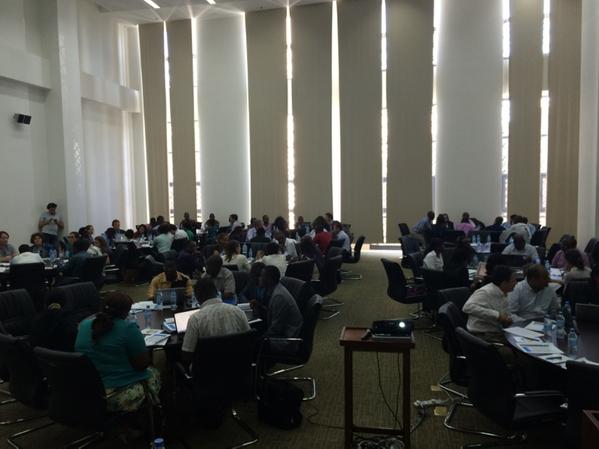It is often stated that technology is not a panacea solution to any problem, especially problems in governance and citizen engagement. Here at Ushahidi we often say that technology is only 10% of the solution. The other 90% is about people and the partnerships they form.
At the OGP Africa Regional Meeting held on 20-21 May 2015 in Dar es Salaam, actors from government, civil society and policy-making came together to share lessons learned from implementation of open government initiatives and explore new ideas to take OGP forward.
[caption id="attachment_17282" align="aligncenter" width="599"] Image courtesy of @opengovpart[/caption]
One of the sessions explored how technology can best be leveraged to close the feedback loop between citizens and governments, and therefore result in responsive governance. The session featured a discussion on case studies in Tanzania and South Africa. In the Tanzanian case, a governmental institution (Commission for Human Rights and Good Governance) has used web and mobile technology to access citizens in rural and marginalised areas. In the South African case, a rating and reviews platform established by a private company (Yowzit) has been applied to allow citizens to voice feedback on local public services. Highlights that stood out from the conversation between participants and panelists centered around the value of technology, its limitations in facilitating dialogue among citizen communities and between citizens and governments and the lessons learned about how far technology itself can go in solving governance problems. Key points that stood out for me were:
Image courtesy of @opengovpart[/caption]
One of the sessions explored how technology can best be leveraged to close the feedback loop between citizens and governments, and therefore result in responsive governance. The session featured a discussion on case studies in Tanzania and South Africa. In the Tanzanian case, a governmental institution (Commission for Human Rights and Good Governance) has used web and mobile technology to access citizens in rural and marginalised areas. In the South African case, a rating and reviews platform established by a private company (Yowzit) has been applied to allow citizens to voice feedback on local public services. Highlights that stood out from the conversation between participants and panelists centered around the value of technology, its limitations in facilitating dialogue among citizen communities and between citizens and governments and the lessons learned about how far technology itself can go in solving governance problems. Key points that stood out for me were:
 Image courtesy of @opengovpart[/caption]
One of the sessions explored how technology can best be leveraged to close the feedback loop between citizens and governments, and therefore result in responsive governance. The session featured a discussion on case studies in Tanzania and South Africa. In the Tanzanian case, a governmental institution (Commission for Human Rights and Good Governance) has used web and mobile technology to access citizens in rural and marginalised areas. In the South African case, a rating and reviews platform established by a private company (Yowzit) has been applied to allow citizens to voice feedback on local public services. Highlights that stood out from the conversation between participants and panelists centered around the value of technology, its limitations in facilitating dialogue among citizen communities and between citizens and governments and the lessons learned about how far technology itself can go in solving governance problems. Key points that stood out for me were:
Image courtesy of @opengovpart[/caption]
One of the sessions explored how technology can best be leveraged to close the feedback loop between citizens and governments, and therefore result in responsive governance. The session featured a discussion on case studies in Tanzania and South Africa. In the Tanzanian case, a governmental institution (Commission for Human Rights and Good Governance) has used web and mobile technology to access citizens in rural and marginalised areas. In the South African case, a rating and reviews platform established by a private company (Yowzit) has been applied to allow citizens to voice feedback on local public services. Highlights that stood out from the conversation between participants and panelists centered around the value of technology, its limitations in facilitating dialogue among citizen communities and between citizens and governments and the lessons learned about how far technology itself can go in solving governance problems. Key points that stood out for me were:
Citizens around the world are developing a new approach to civic participation and this approach is driven largely by new technologies that are becoming accessible to them. What opportunities does this present for us to use these tools to dialogue with governments? Technology is a way for governments to access geographically dispersed citizens and to do this to scale. For instance the project in Tanzania leveraged mobile to provide rural citizens with access to services that they were previously unable to access through post and physical office visits. In spite of this however, technology is not a substitute to constructive dialogue between citizens and governments because government institutions are comprised of people, and it is people who must collaborate to create new ways of solving problems. Technology is only a tool to solve a problem, and is not itself the solution.